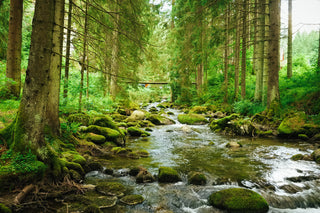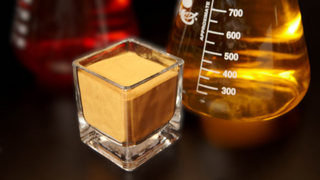-
Peat Formation and Carbon Sequestration: Peat moss, also known as sphagnum moss, is a key component of peatlands found in lush forests. Peat mosses grow in dense mats on the forest floor and accumulate slowly over time, forming layers of peat. These layers consist of partially decomposed plant material, including mosses, leaves, and roots, which are rich in organic matter. Peatlands store vast amounts of carbon, making them important carbon sinks. The slow decomposition of organic matter in waterlogged conditions prevents carbon from being released back into the atmosphere, contributing to long-term carbon sequestration.
-
Soil Moisture Retention: Peat moss has exceptional water-holding capacity, capable of retaining large amounts of moisture even in drier periods. The dense, sponge-like structure of peat moss absorbs rainwater and gradually releases it, helping to maintain soil moisture levels in lush forest ecosystems. This is crucial for supporting the growth of vegetation, particularly in areas with seasonal fluctuations in precipitation.
-
Nutrient Cycling: Peat moss plays a key role in nutrient cycling within lush forest ecosystems. As organic matter accumulates in peatlands, it undergoes decomposition by microbial activity. Nutrients released during decomposition are absorbed by peat moss and other vegetation, supporting their growth and productivity. Peatlands act as nutrient reservoirs, slowly releasing nutrients over time and contributing to the overall fertility of the surrounding forest soils.
-
Habitat and Biodiversity: Peatlands provide unique habitats for a variety of plant and animal species. Peat moss mats create microhabitats for specialized plants, mosses, and lichens adapted to the acidic and waterlogged conditions of peatlands. These habitats support a diverse range of flora and fauna, including rare and endangered species such as carnivorous plants, bog orchids, and various bird species. Peatlands also serve as important breeding grounds for amphibians and nesting sites for waterfowl.
-
Climate Regulation: Peatlands play a role in regulating local and regional climate patterns. The high water content and low oxygen levels in peatlands slow down the decomposition of organic matter, reducing the release of carbon dioxide into the atmosphere. Additionally, peatlands act as natural water filters, purifying runoff water and regulating water flow in surrounding ecosystems. This helps mitigate the impacts of floods and droughts and contributes to the overall resilience of lush forest ecosystems to climate change.
Overall, organic matter, particularly in the form of peat moss, is a crucial component of lush forest ecosystems. Peatlands provide important ecosystem services such as carbon sequestration, soil moisture regulation, nutrient cycling, habitat provision, and climate regulation, making them invaluable for biodiversity conservation and ecosystem sustainability. Protecting and preserving peatlands is essential for maintaining the health and resilience of lush forest ecosystems in the face of environmental change.











![How Does FULVIC Acid Work? [UNDERGROUND]](http://mettlefactor.com/cdn/shop/articles/MF_Website_Banners-6.png?v=1729117714&width=320)